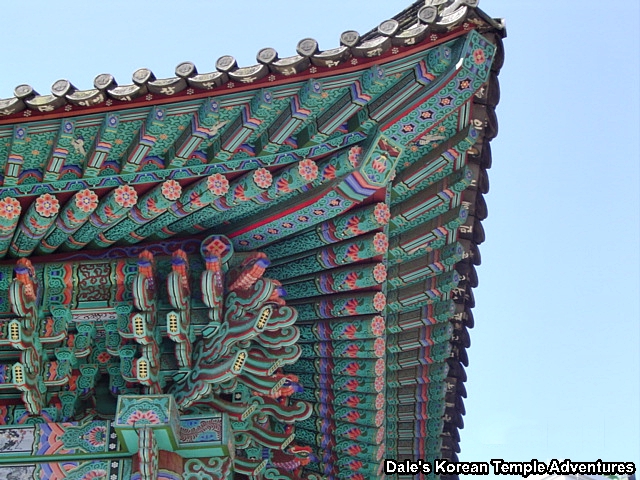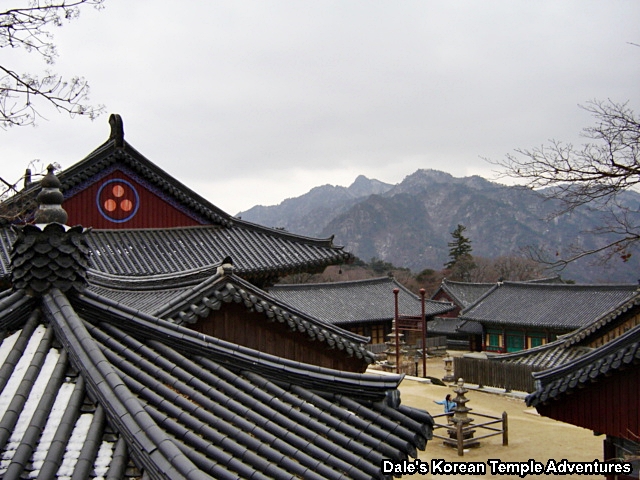
History of the Jogye Order
The Jogye Order, which is officially known as the “Jogye Order of Korean Buddhism” in English, has its roots in the Seonjong Gusan, or “Nine Mountain Schools” in English. The Nine Mountain Schools were descended from Chan Buddhism in China. This developed during Unified Silla (668-935 A.D.) during the ninth century and is known as Seon Buddhism in Korea. In fact, these Nine Mountain Schools would adopt the name of “Jogye-jong” in reference to Caoxi. Caoxi is the home village where Nanhua Temple is located, which was the home temple where Sixth Patriarch Huineng (638-713 A.D.) lived and taught. Jogye is a transliteration of Caoxi.
However, during the Goryeo Dynasty (918-1392), Cheontae Buddhism, which is a descendant of Tiantai Buddhism in China, grew in popularity and prominence under Uicheon (1055-1101). In response to this, both Jinul (1158-1210) and Taego Bou (1301-1383) led a major Seon movement. In fact, Jinul is thought to be the founder of what we now know as the Jogye Order for attempting to unify the various sects of Korean Buddhism into one cohesive organization during the Goryeo Dynasty. This would lead to one of the guiding principles of Seon Buddhism, which was “sudden enlightenment followed by gradual cultivation.” This principle would be founded on the centrality of meditation supported by the study of sutra as found in Pure Land Buddhism.
However, during the Joseon Dynasty (1392-1910), and over a nearly five hundred year period, any and all forms of Buddhism, which included Seon Buddhism, were repressed in favour of Confucianism. In fact, during the reign of King Sejong the Great (r. 1418-1450), the numerous Buddhist sects that thrived before the Joseon Dynasty were reduced to two: the doctrinal and meditative schools. And even these were suppressed during the reign of King Yeonsangun of Joseon (r. 1494-1506). However, through the efforts of the Righteous Army, as led by Seosan-daesa (1520-1604) and Samyeong-daesa (1544-1610), they would help defend the Korean Peninsula against the invading Japanese during the Imjin War (1592-1598). This would help improve, somewhat, the situation for Buddhism during the mid to latter half of the Joseon Dynasty.
However, it’s not until the political reforms of 1895 that monks, who had previously been banished from Korean cities, were finally allowed back into these urban areas. Then in 1899, under the leadership of Gyeongheo (1849-1912), monks from Haeinsa Temple petitioned the government to re-establish the traditions of Korean Buddhism. Eventually, this would result in the founding of the Won-jong and Imje-jong orders being founded. Also at this time, efforts were made to bring back a doctrinal form of Buddhism. However, these efforts were quashed through suppression following the Japanese Occupation of the Korean Peninsula in 1910.
During the Japanese Occupation of the Korean Peninsula, leading monks like Yongseong (1864-1940) and Manhae (1879-1944) resisted Japanese occupation. It was also during this time, from 1910 to 1945, that efforts were made to re-establish traditional forms of Korean Buddhism. For example, in 1921, the Sonhakwon Seon Meditation Centre was established; and in 1929, a Monks’ Conference of Joseon Buddhism was held. Finally in 1937, a movement to establish a Central Headquarters began, which resulted in the building of the Daeung-jeon Hall at Jogyesa Temple in Seoul in 1938. With all this momentum and hard work, the Joseon Buddhism Jogye Order was established in 1941, which was free of Japanese influence. This would be the modern precursor to today’s Jogye Order of Korean Buddhism.
Following the liberation of the Korean Peninsula from the Japanese in 1945, Seon monks began a purification movement that would re-establish the traditional celibate order and expel married monks that had been influenced by Japanese Buddhism. This movement also took back the traditional temples from these married monks. Then in 1955, the Jogye Order was established centred around celibate monks.
Finally, on April 11th, 1962, the Jogye Order of Korean Buddhism was officially established. With this, the Jogye Order established three main goals: first, for training and education; second, for sutra translation into Korean from Chinese characters; and third, for the propagation of traditional Korean Buddhism.

The Jogye Order Now
In total, there are about 3,500 temples and Buddhist centres directly associated with the Jogye Order. And of these 3,500, they are divided into 24 nation wide districts. Remarkably, of the 870 traditional Korean temples, which are supported and preserved with the assistance of the Korean government, more than 90%, or some 840, belong to the Jogye Order. And of these 840 temples, 65% of Korea’s National Treasure, Treasures, and Local Treasures, are found at these temples.
In total, there are over 10,000 monks in the Jogye Order with some 1,500 monastics attending seventeen colleges and universities throughout Korea. Additionally, the Jogye Order has five monastic training temples, which are known as “chongrim” in Korean. It’s here that novice monks receive their training. There’s the Haein Chongrim at Haeinsa Temple; the Jogye Chongrim at Songgwangsa Temple; the Yeongchuk Chongrim at Tongdosa Temple; the Deoksung Chongrim at Sudeoksa Temple; and the Gobul Chongrim at Baegyangsa Temple. At these monastic training temples, novice monks train in three major areas. They are the meditation school, or “seon” in Korean; a traditional sutra school, which is known as a “gangwon” in Korean; and a precepts school.
In addition to the monks and nuns that make up the order, the Jogye Order also runs numerous programs for lay people like the highly popular Temple Stay program, where lay people can experience the life of a monk or nun at some of Korea’s most famous temples like Bongeunsa Temple in Seoul, Haeinsa Temple in Hapcheon, Gyeongsangnam-do, and Beomeosa Temple in Busan. In addition to the Temple Stay program, there are various other programs for people of varying ages including children, teenagers, and adults.
Jogye Order District Head Temples
The over 3,500 Jogye Order temples, which includes the vast majority of historic Korean Buddhist temples, are organized under 24 District Head Temples. These 24 head temples oversee a district, which is known as a “gyogu” in Korean. Each of these 24 head temples oversee a large number of subordinate temples. Here are the list of the 24 District Head Temples.
| District Head Temple | Temple | Established | Location |
| 1 | Jogyesa Temple | 1938 | 45 Gyeonji-dong, Jongno-gu, Seoul |
| 2 | Yongjusa Temple | 854 A.D. | 188 Songsan-ni, Taean-eup, Hwaseong-gun, Gyeonggi-do |
| 3 | Sinheungsa Temple | 652 A.D. | 170 Seorak-dong, Sokcho-si, Gangwon-do |
| 4 | Woljeongsa Temple | 643 A.D. | 63 Dongsan-ni, Jinbu-myeon, Pyeongchang-gun, Gangwon-do |
| 5 | Beopjusa Temple | 553 A.D. | 209 Sanae-ri, Naesorak-myeon, Boeun-gun, Chungcheongbuk-do |
| 6 | Magoksa Temple | 640 A.D. | 567 Unam-ni, Sagok-myeon, Gongju-si, Chungcheongnam-do |
| 7 | Sudeoksa Temple | 6th Century | 20 Sacheon-ni, Deoksan-myeon, Yesan-gun, Chungcheongnam-do |
| 8 | Jikjisa Temple | 418 A.D. | 216 Unsu-ri, Daehang-myeon, Gimcheon-si, Gyeongsangbuk-do |
| 9 | Donghwasa Temple | 493 A.D. | 35 Dohak-dong, Dong-gu, Daegu |
| 10 | Eunhaesa Temple | 809 A.D. | 479 Chiil-ri, Cheongtong-myeon, Yeongcheon-si, Gyeongsangbuk-do |
| 11 | Bulguksa Temple | 528 A.D. | 15 Jinhyeon-dong, Gyeongju, Gyeongsangbuk-do |
| 12 | Haeinsa Temple | 802 A.D. | 10 Chiin-ri, Gaya-myeon, Hapcheon-gun, Gyeongsangnam-do |
| 13 | Ssanggyesa Temple | 723 A.D. | 208 Unsu-ri, Hwangae-myeon, Hadong-gun, Gyeongsangnam-do |
| 14 | Beomeosa Temple | 678 A.D. | 546 Cheongryong-dong, Geumjeong-gu, Busan |
| 15 | Tongdosa Temple | 643 A.D. | 583 Jisan-ni, Habuk-myeon, Yangsan-gun, Gyeongsangnam-do |
| 16 | Gounsa Temple | 681 A.D. | 116 Gugye-dong, Danchon-myeon, Uiseong-gun, Gyeongsangbuk-do |
| 17 | Geumsansa Temple | 599 A.D. | 39 Geumsan-ni, Geumsan-myeon, Gimje-gun, Jeollabuk-do |
| 18 | Baekyangsa Temple | 632 A.D. | 26 Yaksu-ri, Bukha-myeon, Jangseong-gun, Jeollanam-do |
| 19 | Hwaeomsa Temple | 544 A.D. | 12 Hwangjeon-ni, Masan-myeon, Gurye-gun, Jeollanam-do |
| 20 | Songgwangsa Temple | 10th Century | 12 Shinpyong-ni, Songgwang-myeon, Suncheon-si, Jeollanam-do |
| 21 | Daeheungsa Temple | 426 A.D. | 799 Gurim-ri, Samsan-myeon, Haenam-gun, Jeollanam-do |
| 22 | Gwaneumsa Temple | 1905 | 387 Ara-dong, Jeju-si, Jeju-do |
| 23 | Seonunsa Temple | 577 A.D. | 250 Seonunsa-ro, Asan-myeon, Gochang-gun, Jeollabuk-do |
| 24 | Bongseonsa Temple | 969 A.D. | 32 Bongseonsa-gil, Jinjeop-eup, Namyangju-si, Gyeonggi-do |



Recent comments